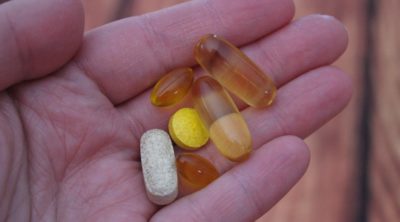
Though pulmonary edema is not always preventable, certain measures taken at the right time, and in the right way, can reduce the risk to a great extent. Here, we will know the causes, symptoms, and some useful tips to prevent the leading cause of pulmonary edema.
Edema is a condition characterized by accumulation of fluid in the cavities and tissues of the body. Pulmonary edema is a buildup of fluid in the alveoli (air sacs) of the lungs. Air sacs are those parts of the lungs, that are associated with absorption of oxygen from the inhaled air and release of carbon dioxide from the blood. So, fluid accumulation in these parts will hinder respiration and lead to trouble in breathing along with other symptoms.
Without proper and timely medical attention, acute pulmonary edema can lead to complications that may sometimes result in death. Prevention of this condition may not be always possible. However, proper management of the underlying cause is the most practical thing to do, apart from switching to a healthy lifestyle. This Buzzle article will provide you with some tips to prevent pulmonary edema.
Causes
The most common cause for pulmonary edema is heart problems. The oxygenated blood from the alveoli reaches the left atrium of the heart through the pulmonary veins. From the left atrium, the blood passes to the left ventricle. When the left ventricle fails to pump out this blood to different parts of the body, the pressure inside the atrium, pulmonary vein, and the blood capillaries inside the lungs increases. This pressure causes flow of serous fluid in the blood to the alveoli or air sacs, thereby impairing the respiration process.
The common cardiogenic causes for pulmonary edema are cardiomyopathy, cardiac artery disease and heart attacks, valve problems, high blood pressure, etc. Other causes include pneumonia, kidney disease, lung damage, acute respiratory distress syndrome, sepsis, exposure to toxins, etc. Drowning may also cause pulmonary edema. Another cause is exposure to high altitudes. Mostly, this happens at higher elevations of more than 2,500 meters. Some people may develop the condition in lower altitudes too.
Symptoms and Treatment
As the condition interferes with respiration, breathing trouble is the most common symptom of pulmonary edema. Apart from that, the affected person may develop:
- A frothy sputum tinged with blood
- Wheezing
- Excessive sweating
- Coughing up blood
- Pale skin
- Rapid heartbeat
Some people develop the condition gradually, and in such cases, symptoms, like swollen ankles, frequent urination during the night, etc., may be seen. They may also experience difficulty in breathing while lying down and breathlessness during nighttime.
The mode of treatment for pulmonary edema is decided mainly on the basis of the underlying cause and severity of the condition. The accumulated fluid may be sucked out of the lungs using tubes or through an open surgery. Medication, like diuretics and narcotics are often administered to relieve the symptoms. Steps will be taken to control the blood pressure too. Oxygen may be given through a facial mask or nasal tube, or with the help of machines.
How to Avoid Pulmonary Edema
Treating the Underlying Cause: As mentioned above, there are certain medical conditions that can be considered as risk factors for pulmonary edema. Those with such medical conditions must make sure that they get proper treatment to cure or control the same.
Maintain Heart Health: As the main causes for pulmonary edema are heart problems, it is advisable to maintain the health of the organ in a proper way. Visit your doctor regularly, and adopt a healthy lifestyle.
- Control your blood pressure and blood cholesterol levels. Both the conditions carry the risk of cardiovascular diseases that could cause pulmonary edema. While a healthy lifestyle can help you to prevent these problems, medical treatment may be required to control the same.
- Have a balanced diet that is low in salt and fat. A diet that is rich in both is a definite cause for heart diseases in the long run. So, limit your intake to prevent such diseases and reduce the risk of pulmonary edema. Include fruits, vegetables, and whole grains in your diet.
- Exercise regularly for at least 30 to 60 minutes daily. Aerobic activities are said to be the best for heart health. Consult your doctor, and adopt an exercise regimen that is suitable for you.
- Maintain the ideal body weight. Being overweight is a risk factor for a host of medical conditions, including heart diseases and diabetes. So, it is highly necessary to maintain your ideal weight to prevent such medical conditions and the related complications.
- Minimize stress and anxiety. Whenever it comes to heart health, stress is one of those factors that is often discussed. High levels of stress are linked to various medical conditions. Avoid stress, or else indulge in stress-relief activities, like meditation. Make sure to get enough sleep and rest.
- Avoid smoking, alcohol, and illegal drugs. Smoking and excess alcohol intake are not considered good for the health of the heart as well as lungs. Illegal drugs may sometimes cause adverse reactions, like pulmonary edema.
Avoid Rapid Ascent to High Altitudes: According to experts, slow climbing, especially at higher altitudes, is always better to avoid pulmonary edema (high altitude pulmonary edema). Once you reach higher altitudes of around 2500 meters, avoid climbing more than 500 to 600 meters a day. There are certain medications that may prove beneficial in preventing pulmonary edema while climbing higher altitudes. Consult your doctor, and take the medicines as per his/her instructions.
Vaccination: Certain types of vaccines may help you in reducing the risk of pulmonary edema caused by some underlying diseases (that can be prevented with vaccination). As pneumonia is one of the possible causes of pulmonary edema, a vaccine against the disease may prove beneficial for those who are at a risk of developing the same. Even the flu vaccine is recommended in some cases.
Prevention of pulmonary edema may not be possible in some cases, but those in the high-risk group can try these precautionary measures. Otherwise too, a healthy lifestyle is considered as the most important factor for prevention of a host of medical conditions. If you happen to develop any of the symptoms mentioned above, contact your healthcare provider. Immediate medical attention must be sought in case of severe chest pain, excessive sweating, rapid heartbeat, pale skin, and breathing trouble.
Disclaimer: This article is for informational purposes only and should not be used as a replacement for professional medical advice. Visiting your physician is the safest way to diagnose and treat any health condition.


